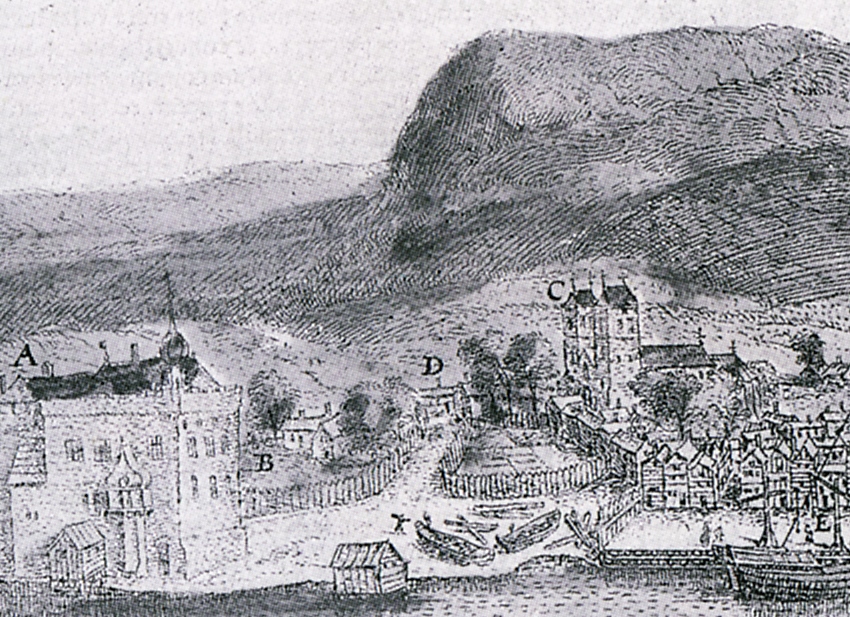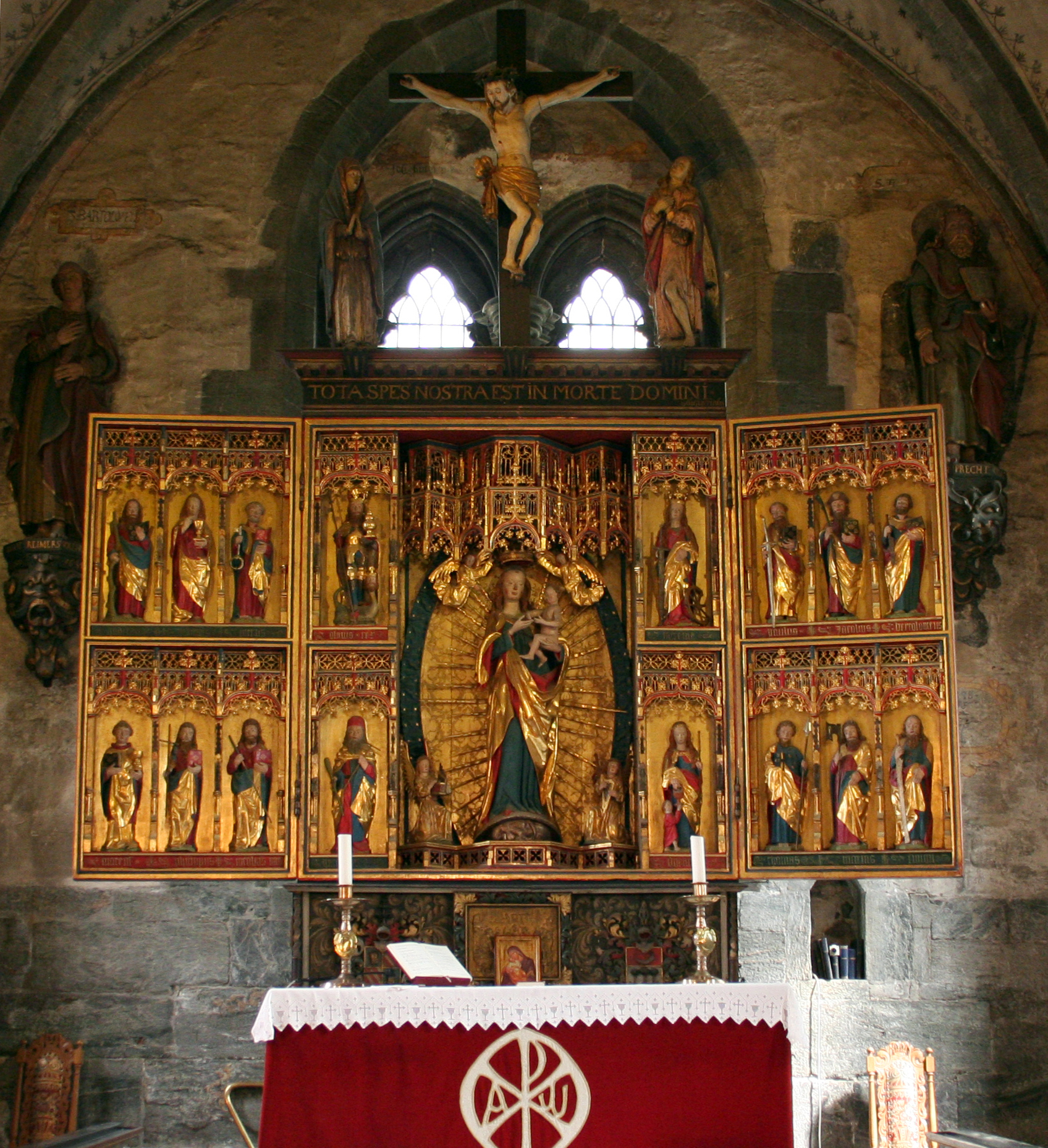The Fulkerson Family Pages
Above is a 1580 drawing of Bergen. The C marks St. Mary's Church. The construction of the church is believed to have been started in the 1130s or 1140s and was completed around 1180, but the first church was almost destroyed by a town fire in 1198.
On the left, an ancient triptych above the altar at St. Mary's Church portrays at its center the image of the Blessed Virgin Mary as The Woman Clothed with the Sun in Revelation 12:1. Having been built as a Roman Catholic parish church for the Norwegian population of Bergen, St. Mary's Church was taken over by the city's large German population in 1408 after which it was popularly called "the German church." (Tyskekirken) The wealthy Germans who controlled the parish made it a center of socializing for the Hanseatic League. St. Mary's thus, by German protection, escaped ruin by the Protestant iconoclasm which ruined other churches of Norway.
Photo by Morten Dreier
Without doubt, there is every chance Dirck could have found the prospect of life in a new world appealing, given the on-going states of war in Europe and affecting his own region in Norway.
In Central Europe, the Thirty Years' War taking place 1618 to 1648 had taken a bloody toll, killing eight million. Closer to home, The Eighty Years' War (Dutch War of Independence) had raged since 1568, a revolt of the Seventeen Provinces of what are today the Netherlands, Belgium, and Luxembourg, as well as the French region of Hauts-de-France. These parties sought to escape the rule of Philip II of Spain. William the Silent (William of Orange) rallied the northern provinces in their resistance, ultimately prevailing over the House of Habsburg. In 1581 the Republic of the Seven United Netherlands coalesced, quieting the tumult for a short while; but fighting reignited and did not finally end until 1648 (Peace of Münster--part of the Peace of Westphalia).
Initially the wars had been conflicts between Protestants and Catholics--but over time became less about religion and more motivated by a rivalry between France and the Habsburgs.
In Norway, the colorful King Christian IV was known as Christian Kvart, and he visited Normandy intermittently, ruling his kingdom from Normandy at times. His was the longest-running Scandanavian monarchy in European history, lasting fifty years.
When Dirck arrived in New Amsterdam, King Christian would have been nearly 40 years old, and almost twenty years into his monarchy as a popular and ambitious Danish king. King Christian IV instituted the Danish East India Company, which concentrated its efforts in Ceylon, which is today known as the Democratic Socialist Republic of Sri Lanka.
Nearly 100 years of conflict and war had resulted in tremendous upheaval of philosophy, political systems, and property ownership and management.
While it is undeniable the development and spread of Protestantism propagated like a giant, widening crack in the old order of things, secular forces and the vying for power between various royal houses, a merchant class gaining in wealth and power, colonization of not only lands in the western hemisphere, but far into the east and Asia, along with technological advancements seeding the first mega-scale manufacturing enterprises were all melding Scandanavia into what would coalesce in a Dutch Golden Age getting under way right about the time of our ancestor Dirck's birth, sometime between 1595 and 1600.
We can only guess what may have motivated our ancestor to set out from Bergen in a westerly direction, to a far-off land almost wholly unknown.
Family chroniclers have theorized opportunities for him may have been limited in Bergen due to the presence and near occupation of the city by Germans of the Hanseatic League.
Religious conflict between Roman Catholicism and Protestantism has been suggested as a motivator, but the kerfuffle over Christian dogma had mostly died down in the region, except for some heated debates within the Dutch Reformed Church between Jacobus Arminius and Franciscus Gomarus regarding the workings of predestination.
Back to Family Stories Index



